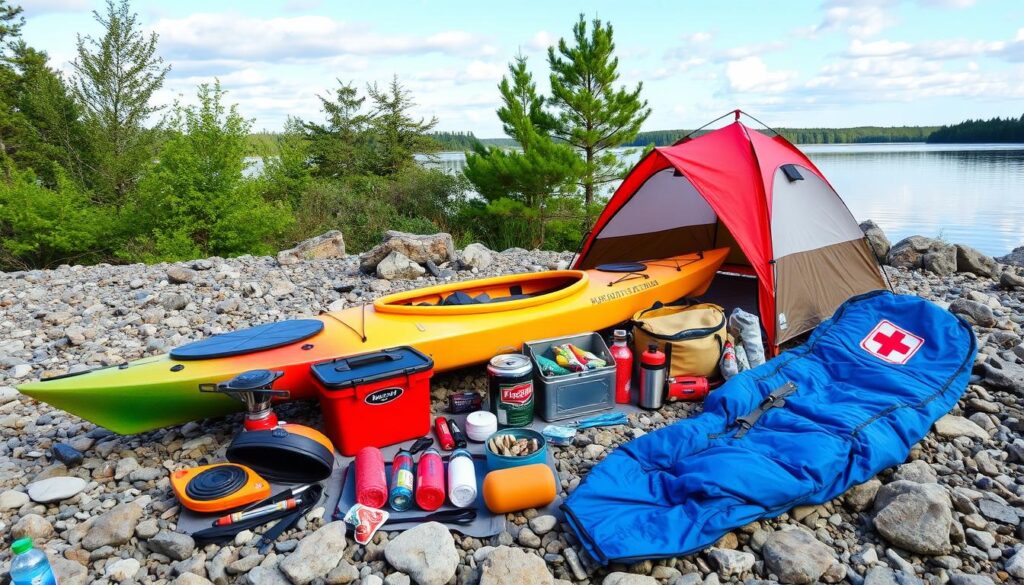
The sound of water against your kayak and the quiet of nature around you are magical. Kayak camping offers an unforgettable adventure. But, you must prepare carefully.
Kayak camping is different from regular camping. You need to balance your kayak’s needs with comfort. Every item you carry is important, especially when you’re far from home.
Planning for kayak camping is key. You must think about how to pack light and keep things dry. The right gear ensures you’re safe and comfortable on and off the water.
Key Takeaways
- Comprehensive kayak camping checklist ensures safety and comfort
- Unique gear requirements differ from traditional camping
- Weight and waterproofing are critical considerations
- Proper planning prevents potential outdoor challenges
- Strategic packing maximizes kayak camping experience
Essential Kayak Gear for Overnight Adventures
When planning a kayak camping trip, picking the right gear is key. You need items that keep you safe, comfy, and ready for your journey. The right equipment balances being useful, light, and tough.
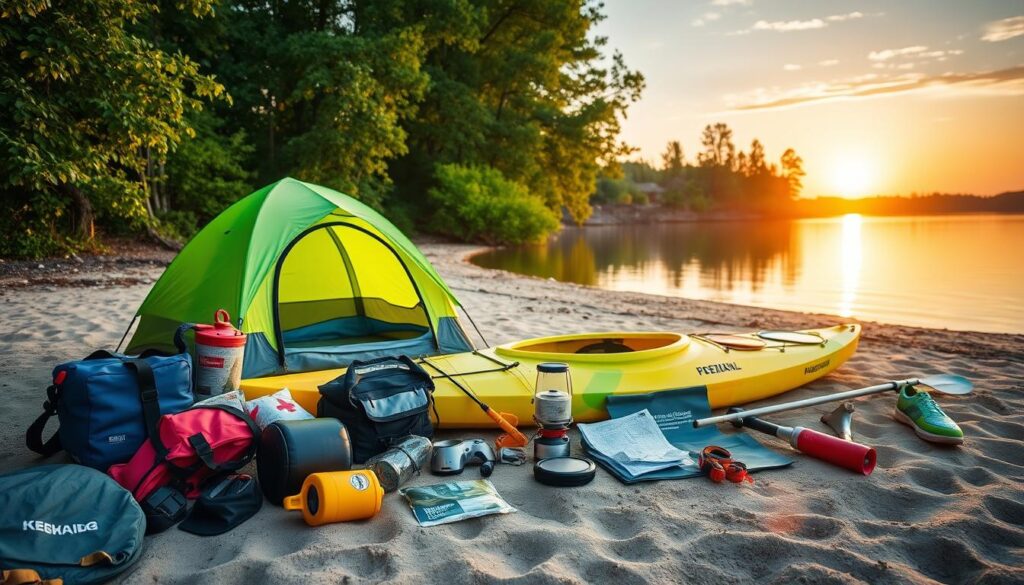
Choosing the right safety gear can turn a good trip into a great one. Here’s what you’ll need for your kayak camping adventure.
Basic Kayaking Equipment
- High-quality paddle with lightweight design
- Comfortable, properly fitted kayak
- Kayak-specific life jacket (PFD)
- Spare paddle
- Kayak cart for transportation
Safety Gear Essentials
| Safety Item | Purpose |
|---|---|
| Waterproof First Aid Kit | Emergency medical treatment |
| Emergency Communication Device | Satellite phone or marine radio |
| Repair Kit | Patch holes, fix equipment |
| Whistle | Signaling for help |
Navigation Tools
Your safety gear must include good navigation tools. Precision in navigation can prevent potential emergencies.
- Waterproof marine GPS
- Detailed topographic maps
- Compass with protective case
- Backup battery or solar charger
“The right gear transforms a challenging kayak trip into an unforgettable adventure.” – Professional Kayaking Guide
Investing in quality gear is not just about being comfy. It’s about staying safe and enjoying your time on the water.
Waterproof Storage Solutions for Your Equipment
Keeping your gear safe on kayak camping trips is all about smart storage. Kayakers need reliable ways to keep their electronics, clothes, and important items dry. This is crucial in wet environments.
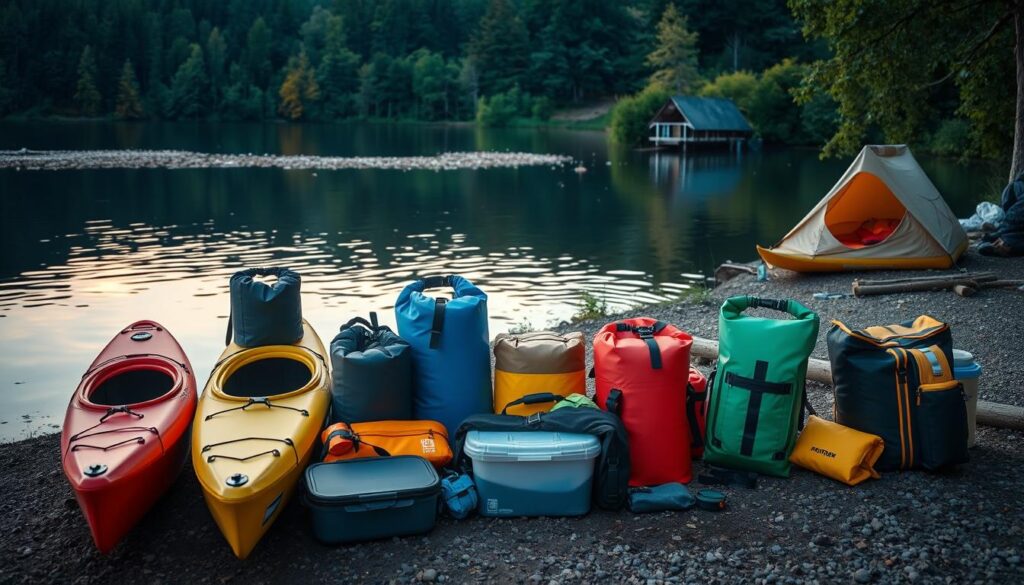
When picking waterproof storage for kayaking, think about these important points:
- Water resistance rating
- Material durability
- Size and capacity
- Ease of access
There are many waterproof storage options for different kayaking needs:
| Storage Type | Best For | Durability Rating |
|---|---|---|
| Dry Bags | Clothing, sleeping gear | High |
| Waterproof Cases | Electronics, documents | Very High |
| Kayak Compartments | Quick-access items | Medium |
“Proper waterproof storage isn’t just about keeping things dry—it’s about ensuring your adventure continues smoothly.”
Pro tip: Always test your waterproof storage before your trip. Redundancy is key in protecting valuable gear from unexpected water exposure.
Invest in quality waterproof storage that fits your kayaking needs. Your equipment’s safety depends on making smart choices.
Camping Equipment and Shelter Essentials
Planning your kayak camping trip? The right gear is key. Your list should include lightweight, compact items. These should boost comfort without adding too much weight or space.
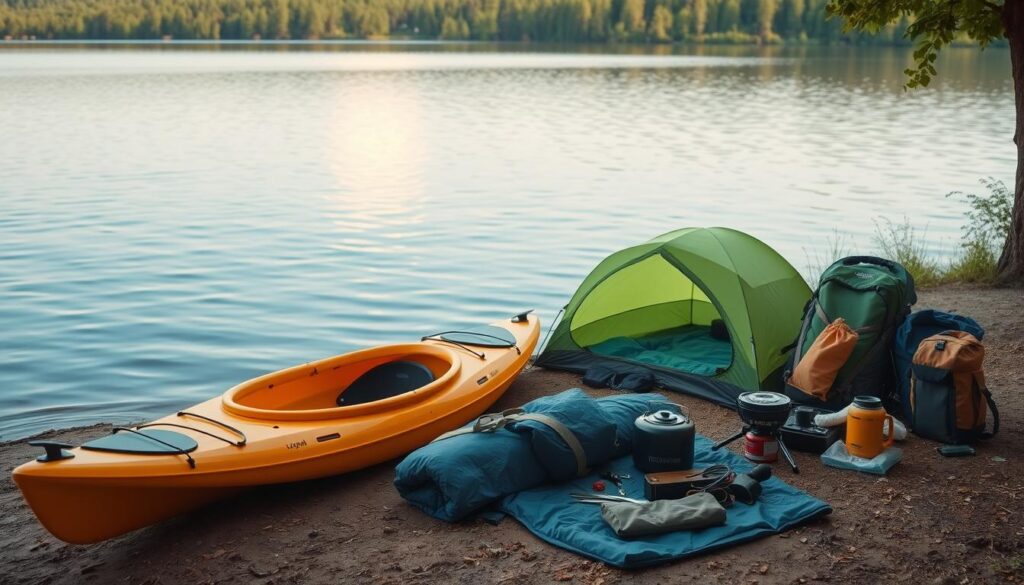
Choosing the right gear for kayak camping is crucial. It’s all about finding a balance between function and portability. Here are some must-haves for your camping trip:
Lightweight Tent and Sleeping Solutions
Look for a tent that’s made for kayak camping. It should have these features:
- Compact, lightweight design under 4 pounds
- Easy setup in various terrain conditions
- Waterproof and wind-resistant materials
Camp Kitchen Considerations
Your packing list should include portable cooking gear. It should be efficient and easy to carry:
- Compact camping stove
- Lightweight cookware set
- Collapsible water containers
- Multipurpose utensils
Personal Comfort Gear
Pack smart with versatile, moisture-wicking clothing and essential items:
- Quick-dry clothing layers
- Compact toiletry kit
- Lightweight microfiber towel
- Multipurpose camp shoes
“The right gear transforms a challenging trip into an unforgettable adventure.” – Experienced Kayak Campers
Kayak Camping Checklist: Complete Packing Guide
Creating the ultimate kayak camping checklist needs careful planning and organization. Your success on the water depends on packing smart. You need essential gear that keeps you safe and comfortable.
A detailed kayak camping checklist prepares you for unexpected challenges. It ensures you don’t forget critical items. Organizing your packing into specific categories makes it easier.
Essential Packing Categories
- Kayaking Gear
- Safety Equipment
- Camping Supplies
- Personal Items
- Food and Water
Kayak Camping Checklist Breakdown
| Category | Key Items | Quantity |
|---|---|---|
| Kayaking Gear | Paddle, life jacket, spray skirt | 1 each |
| Safety Equipment | First aid kit, emergency whistle, signaling device | 1 set |
| Camping Supplies | Lightweight tent, sleeping bag, camping stove | 1 each |
| Personal Items | Quick-dry clothing, waterproof jacket, hat | Multiple |
| Food and Water | Water filter, compact meals, cooking utensils | Sufficient supply |
“Preparation is the key to an enjoyable kayak camping experience. Pack wisely, travel safely.” – Experienced Kayaker
Your kayak camping checklist should be flexible and adaptable. It should fit different environments and trip lengths. Always review and customize your list for specific trips, weather, and personal needs.
Pro Packing Tips
- Use waterproof dry bags for critical items
- Pack lightweight, multipurpose gear
- Distribute weight evenly in your kayak
- Check gear condition before departure
Remember, a well-planned kayak camping checklist transforms potential challenges into exciting adventures.
Food and Water Planning for Kayak Camping
Planning your kayak camping meals is key. You need to think about weight, nutrition, and how to store it. The right food plan can make your trip great, keeping you energized and healthy.
Meal Planning Strategies
Choosing the right kayak camping meals is important. Look for foods that are light, full of energy, and nutritious. This way, you won’t weigh down your kayak.
- Dehydrated meals that require minimal water
- Compact protein sources like jerky and nuts
- Energy bars and trail mix
- Vacuum-sealed individual portions
Water Storage Solutions
Staying hydrated is crucial on a kayak camping trip. You’ll need good ways to store and purify water to stay healthy.
| Water Storage Option | Capacity | Weight |
|---|---|---|
| Collapsible Water Bags | 2-4 Liters | Lightweight |
| Water Filtration Bottles | 1 Liter | Medium |
| Portable Water Purification Tablets | Multiple Uses | Ultralight |
Food Storage Safety
Keeping your food safe from wildlife and spoilage is important. Use waterproof, bear-resistant containers. Also, keep your food sealed in your kayak.
“Good food planning transforms a challenging kayak camping trip into an enjoyable wilderness experience.” – Wilderness Nutrition Expert
Pro tip: Pack your meals in individual, labeled waterproof bags. This minimizes bulk and protects against water damage.
Transportation and Launching Tips
Getting your kayak to your camping spot safely needs careful planning. The right tips for transporting your kayak protect your gear and start your adventure right.
Choosing the best way to move your kayak is key for camping trips. Here are important things to think about:
- Choose a reliable roof rack system that fits your vehicle and kayak
- Invest in good tie-downs and padding to avoid damage
- Think about using a trailer for more kayaks or long trips
“The right transportation setup can make or break your kayak camping experience.” – Experienced Kayak Adventurer
Launching your kayak needs skill and getting ready. Each water place has its own way to do it:
- Beach launches: Approach at a 45-degree angle
- Dock launches: Use a steady entry method
- Riverbank launches: Look for a stable, clear spot
Always put safety first when moving and launching your kayak. Spread out the weight, tie down all gear, and check your equipment before you go. This helps avoid problems during transport or launch.
Pro tip for kayak transportation tips: Always use bow and stern tie-downs to stop shifting. Soft racks are good for occasional use, while hard racks are best for frequent kayakers.
Weather Preparation and Seasonal Considerations
Planning your kayaking trip means thinking about the weather. Knowing the seasons and weather risks is key. It can turn a good trip into a great one.
Weather greatly affects your kayaking. Good campers prepare for all weather changes. This makes their trip safe and fun.
Summer Kayak Camping Essentials
Summer kayaking needs special care against heat and sun. You should pack:
- High-SPF waterproof sunscreen
- Lightweight, moisture-wicking clothing
- Wide-brimmed hat for sun protection
- Adequate hydration supplies
Cold Weather Kayaking Strategies
Cold weather needs special planning. Wearing layers is key to stay warm and avoid getting too cold.
| Layer Type | Recommended Materials | Purpose |
|---|---|---|
| Base Layer | Synthetic or merino wool | Moisture management |
| Insulation Layer | Fleece or down | Thermal retention |
| Outer Layer | Waterproof/windproof jacket | Environmental protection |
Emergency Weather Preparedness
“In kayaking, knowledge is your best safety equipment.” – Professional Kayak Instructor
Make a solid emergency plan. It should include:
- Checking multiple weather forecasts
- Identifying potential shelter locations
- Carrying emergency communication devices
- Understanding local weather patterns
Remember, successful kayak camping is about adaptability and preparedness.
Conclusion
Getting ready for a kayak camping trip needs careful planning. You must know the essential gear, safety rules, and how to handle outdoor challenges. Now, you’re ready to start your kayak camping journey with confidence.
When looking for kayak camping spots, find places that fit your skill level and are safe for overnight stays. National and state parks are great for kayakers. The San Juan Islands in Washington, the Boundary Waters in Minnesota, and the Florida Everglades are top picks.
If you’re bringing your pet kayaking, you need to prepare more. Pick a calm, stable kayak and get a good pet life jacket. Start with short trips near shore to help your pet get used to the water. Remember, not all pets love kayaking, so be patient and train them slowly.
Always put safety first, respect nature, and leave no trace on your kayak camping trips. Your careful planning and sense of adventure will make your journey unforgettable. You’ll explore some of nature’s most beautiful waterways.
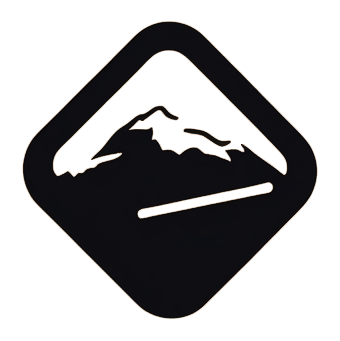
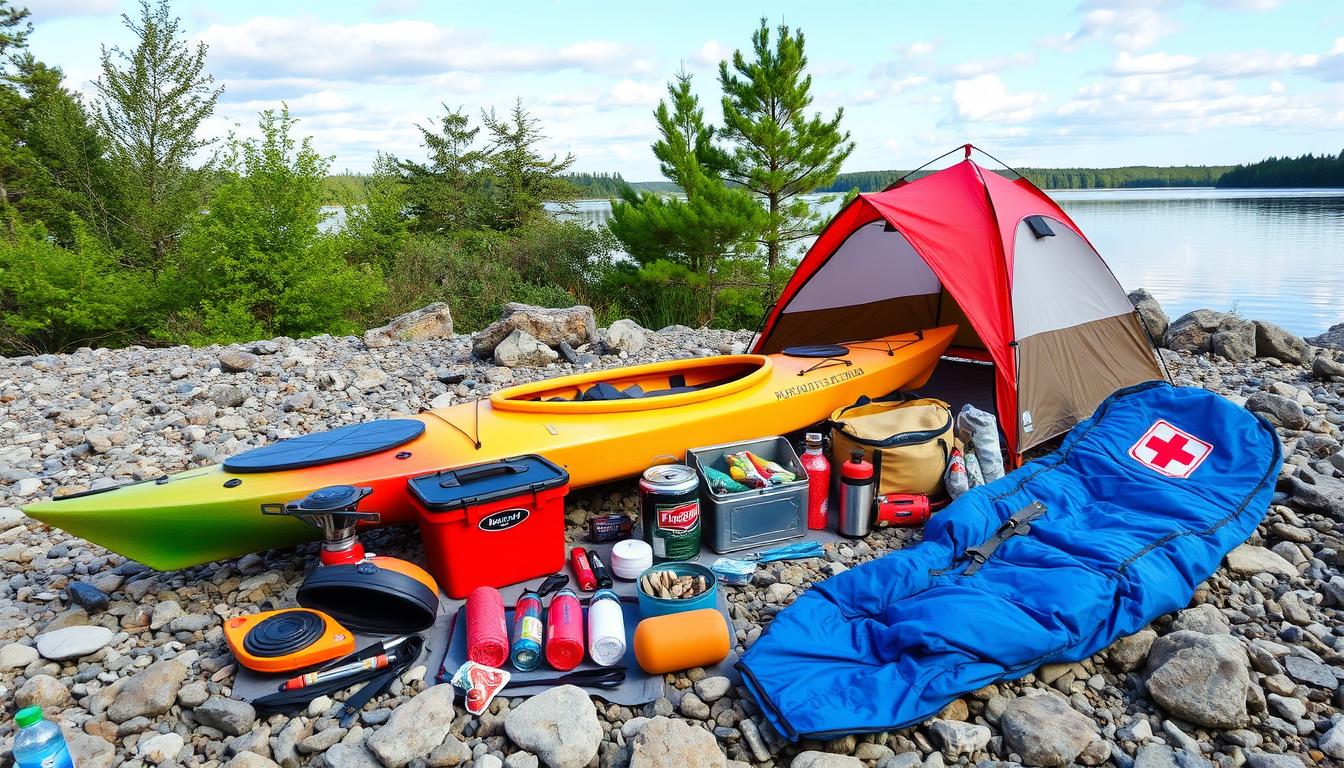
An excellent and informative read! I appreciate how this site offers so much useful content.